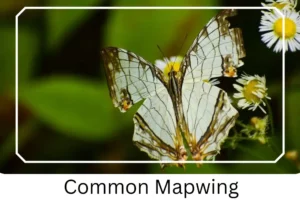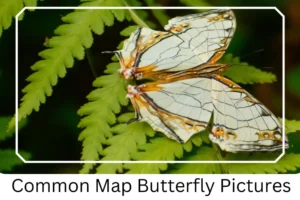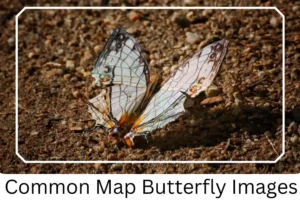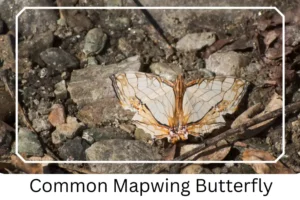Common Map (Cyrestis thyodamas)
The Common Map (Cyrestis thyodamas) is a fascinating species of butterfly that belongs to the Nymphalidae family. Renowned for its distinctive wing patterns that resemble cartographic maps, this butterfly species thrives in diverse habitats across the Indian subcontinent, extending its presence to other regions including China, Japan, and Taiwan, where a unique subspecies exists. This guide delves into the life cycle, characteristics, and intriguing behaviors of the Common Map, offering enthusiasts a comprehensive look at this captivating butterfly.
Scientific Classification
- Family: Nymphalidae
- Genus: Cyrestis
- Scientific Name: Cyrestis thyodamas
Overview
Adapted to a variety of ecological niches, the Common Map butterfly exhibits a remarkable lifecycle that includes transformation from a visually unique caterpillar to a camouflaged pupa, culminating in the emergence of the adult butterfly. This species demonstrates a broad distribution range and prefers habitats that offer abundant host plants for its larvae and ample nectar sources for adults. The following sections provide an in-depth examination of its physical characteristics, behavior, and ecological significance.
Description and Identification
Caterpillar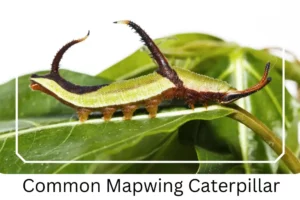
The Common Mapwing Caterpillar is a sight to behold, with its bright green body marked by a distinct brown vertical stripe. It features horn-like protrusions; two on its head and one each above the thorax and near the tail. These caterpillars begin their life cycle by consuming their eggshell, signaling the start of their journey to adulthood.
Pupa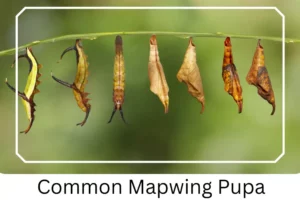
Resembling a dry leaf, the pupa of the Common Mapwing adopts a light brown to orange hue, adorned with light gray or black spots. This mimicry serves as an effective camouflage against predators, allowing it to safely transition to the next stage of its lifecycle.
Adult Butterfly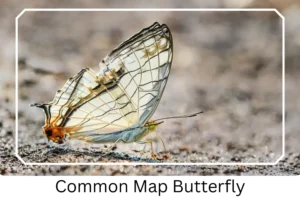
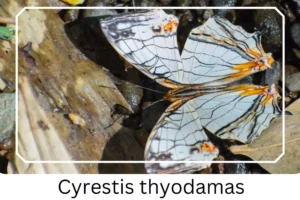
Sexual Dimorphism: Not present
Color and Appearance: The adult Common Map is devoid of sexual dimorphism, making males and females visually indistinguishable. Their wings, when open, showcase intricate chocolate brown lines on a white base, with a splash of orange at the inner corners. The closed wing view offers a muted version of this pattern.
Average Wingspan: Ranges between 58–70 mm
Flight Pattern: Characterized by a slow and erratic flight, enhancing their survival by making it difficult for predators to anticipate their movements.
Additional insights into their behavior, such as mating rituals and territorial disputes, could further illuminate the lives of these intriguing insects.
Eggs
The eggs of the Common Map are light greenish-yellow, showcasing either a domed or conical shape, a testament to the butterfly’s intricate reproductive strategies.
Quick Facts | |
| Distribution | Found from India’s Himalayan region to Travancore, parts of eastern India, extending to China, Japan, and Taiwan for the subspecies. |
| Habitat | Prefers forest edges, sunny fields and meadows, and muddy swamps with tall vegetation. |
| Host Plants | Favors several species within the Ficus genus. |
| Adult Diet | Primarily feeds on flower nectar. |
How to Identify Common Map Butterfly?
Identifying the Common Map butterfly involves looking for its unique wing patterns that resemble the intricate lines of a map. The open wing showcases a mesmerizing array of chocolate brown lines on a white base, punctuated with orange patches near the inner corners, a signature trait of this species. When the wings are closed, the pattern becomes fainter but remains distinctive. Observing its flight pattern also aids identification; the Common Map’s flight is slow and erratic, making it a unique spectacle in its natural habitat. Additionally, spotting this butterfly near its preferred host plants, primarily species of the Ficus genus, can increase chances of identification.
Did You Know?
- The Common Map butterflies are known for their migratory behavior, moving to southern India where they engage in puddling behavior in mud, often seen in large groups. This communal activity is crucial for supplementing their diet with essential minerals.
- Their wing pattern not only serves aesthetic purposes but also plays a vital role in camouflage, confusing potential predators with its map-like designs.
Conclusion
The Common Map butterfly is not just a species; it’s a testament to nature’s intricacy, beauty, and the wonders of evolution. From its distinctive larval stage to its visually stunning adult form, each phase of its life cycle offers a glimpse into the adaptability and diversity of butterfly species. Whether you’re a butterfly enthusiast or a casual observer, understanding and appreciating the Common Map can add a fascinating layer to your natural world explorations.

